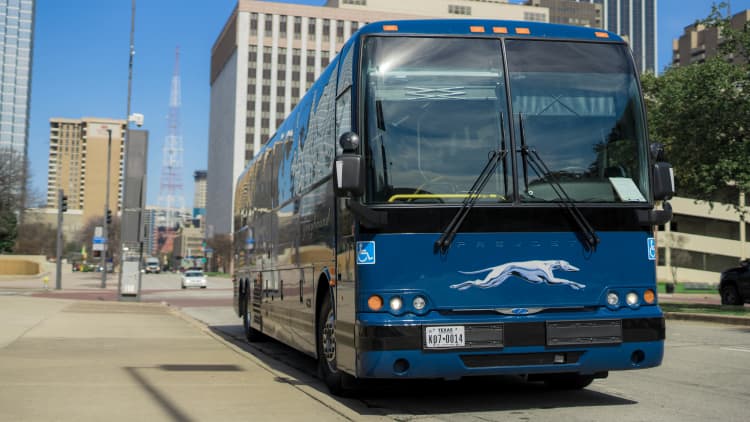
Can bus operator Greyhound stage a comeback?
Shawn Baldwin, CNBC.com producer
Intercity bus travel in the U.S. has long been dominated by one iconic brand. With its fleet of 1,200 buses, Greyhound shuttles nearly 16 million passengers annually to roughly 2,400 North American destinations.
While the company caters to budget conscious, long distance travelers it also offers charter services for businesses, conventions and schools. In addition, it's Greyhound Package Express business provides same- and next-day delivery service to thousands of destinations.
But competition from low-cost airlines and a combination of increased automobile access and low fuel prices have led to mounting headwinds for the bus operator.
The pandemic has also caused passenger demand to plummet.
In its fiscal 2021, Greyhound saw an average of just 10,000 passenger journeys per day compared with 40,000 during the previous period. The company reported an operating loss of $12 million in fiscal year 2021 and a loss of $15 million the year earlier.
And it's not just intercity bus lines like Greyhound that are hurting.
The motorcoach industry, which includes charter, sightseeing and commuter services, has suffered unprecedented economic losses as a result of the pandemic. A motorcoach is generally defined as a long-distance passenger vehicle at least 30 feet in length with a capacity of more than 30 passengers.
Peter Pantuso, President and CEO, American Bus Association
The pandemic has hit the bus and motorcoach industry really harder, I think, then almost any other segment.
Shawn Baldwin
Greyhound provides an affordable travel option for many people including those living in rural areas and others with limited economic resources. So, what does the future look like for the bus operator and what happens to intercity bus service in America once the pandemic ends?


